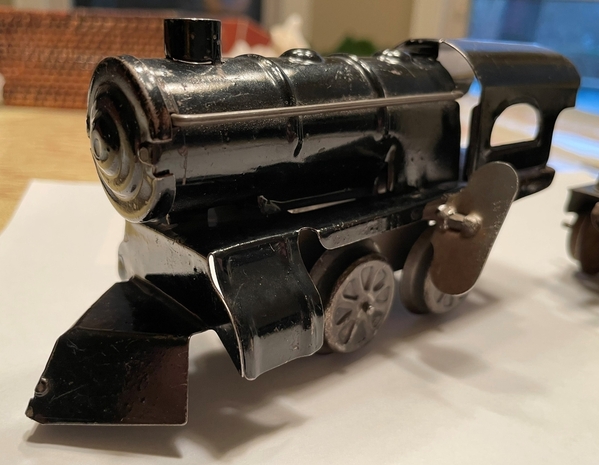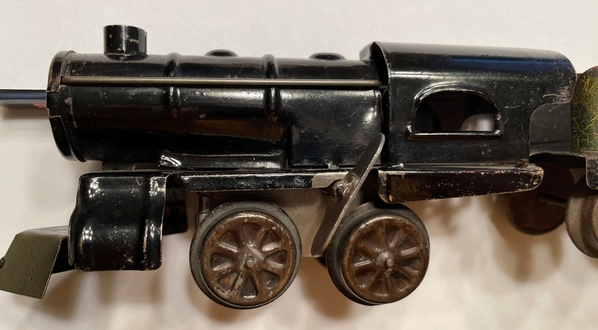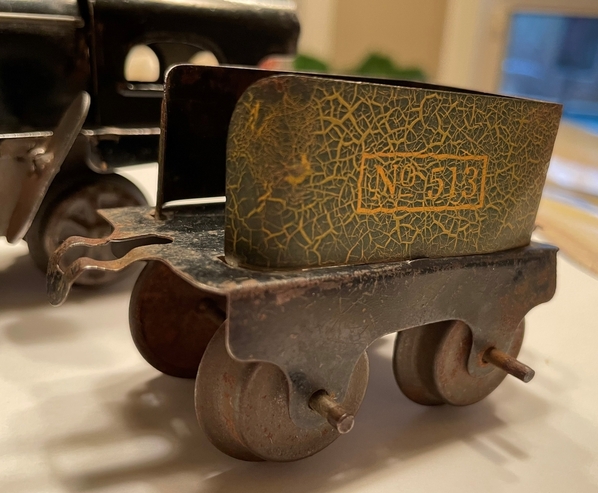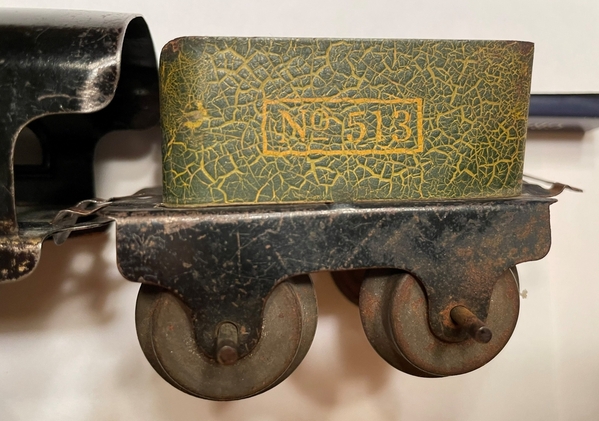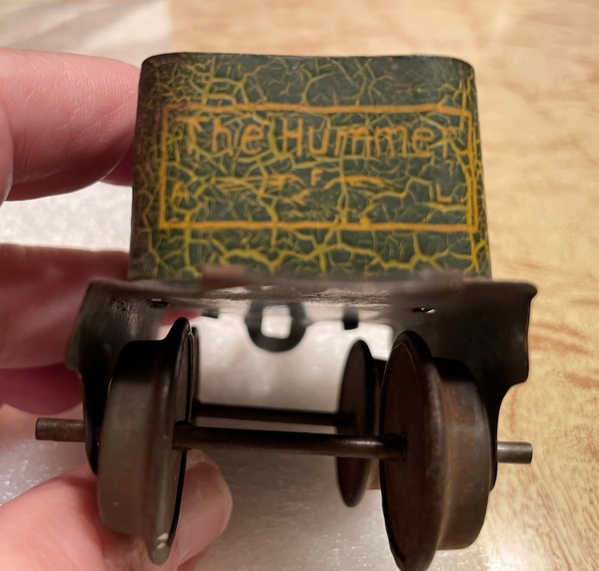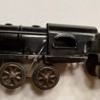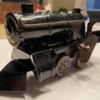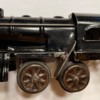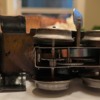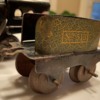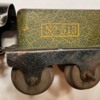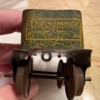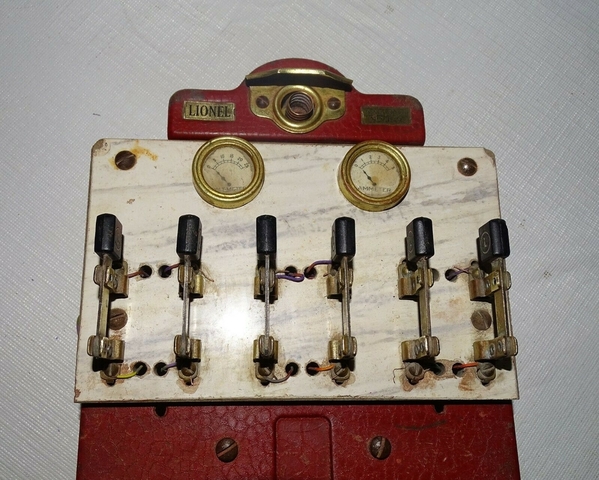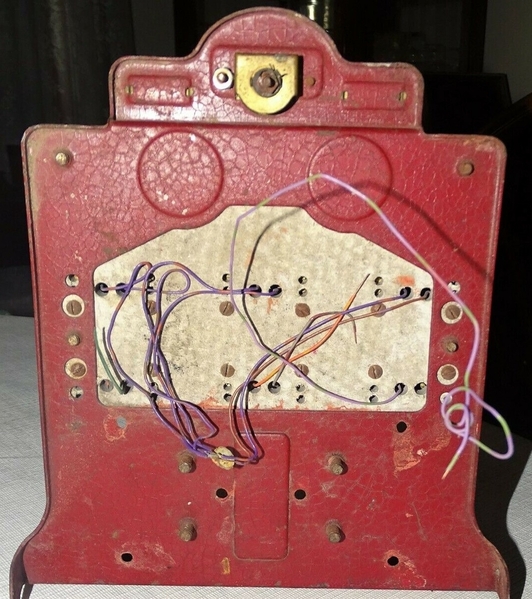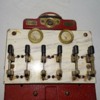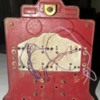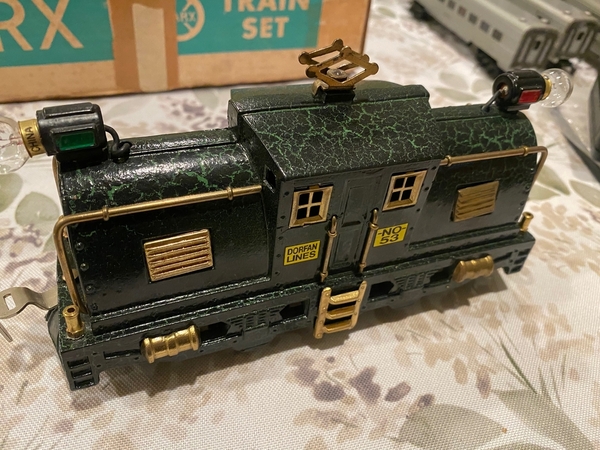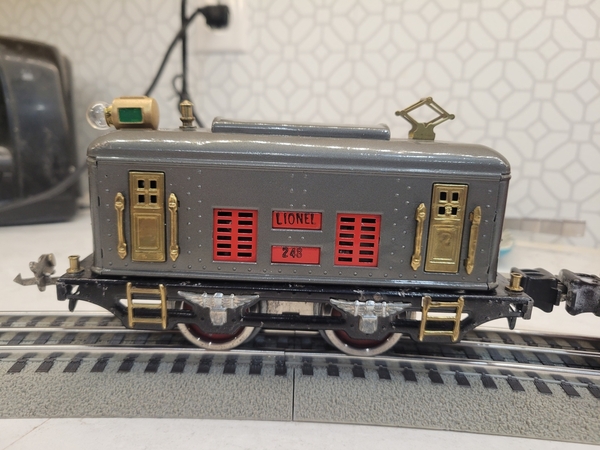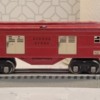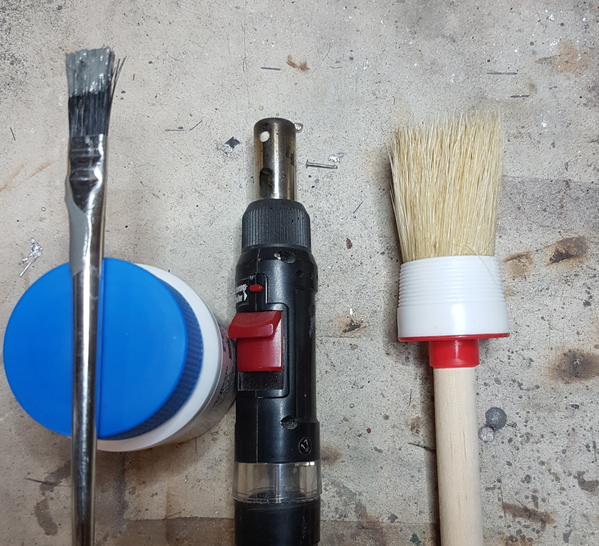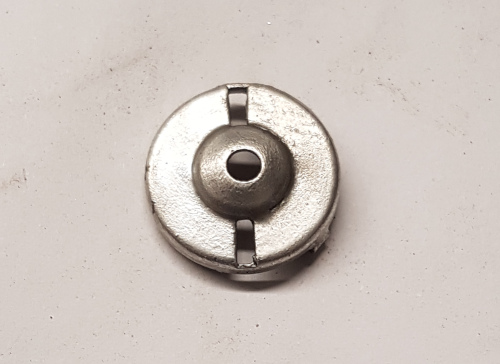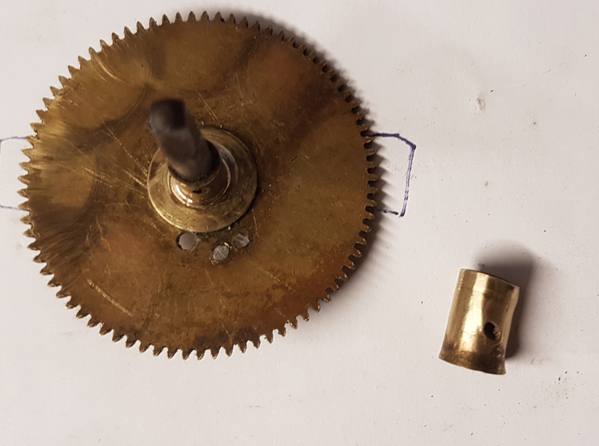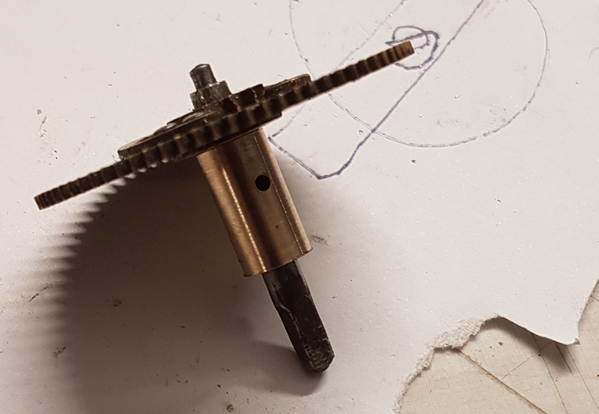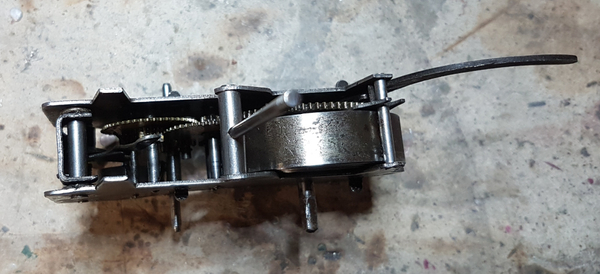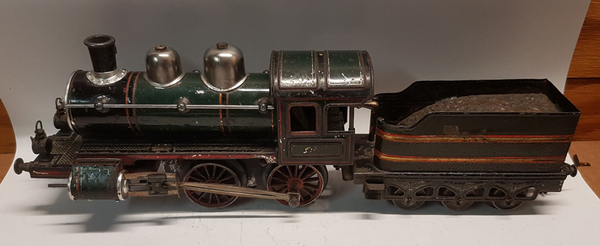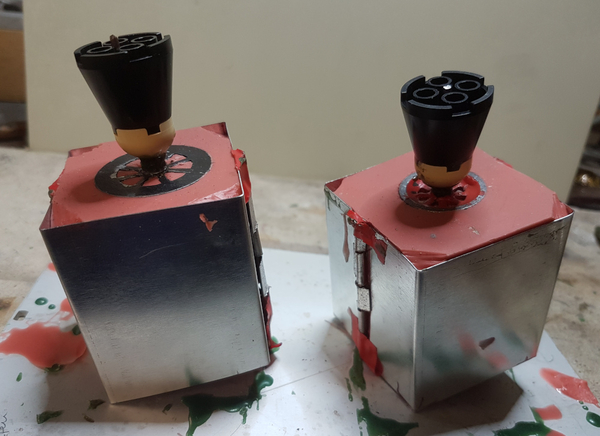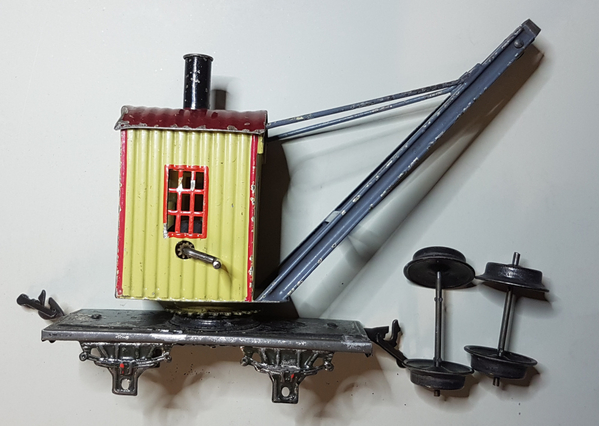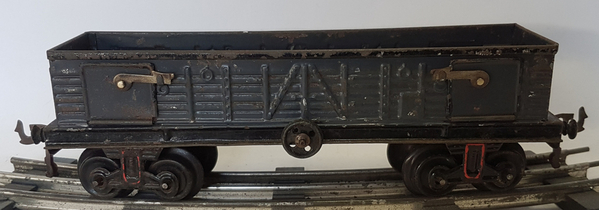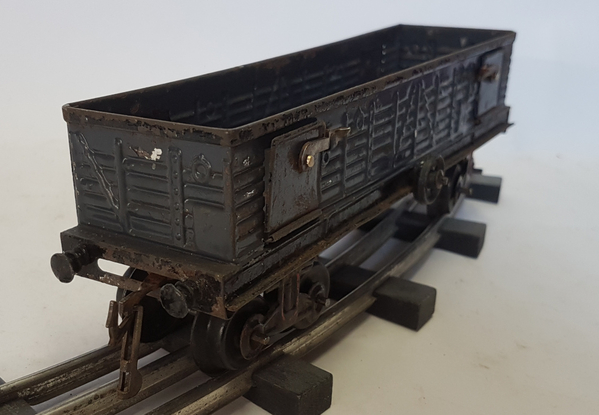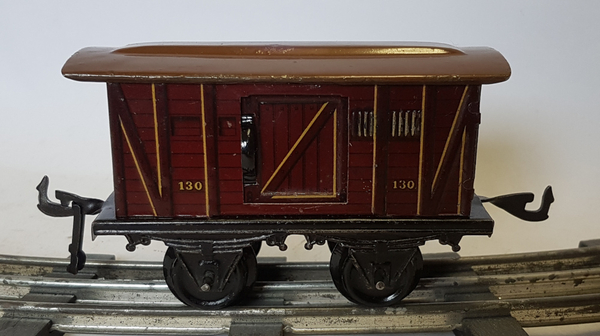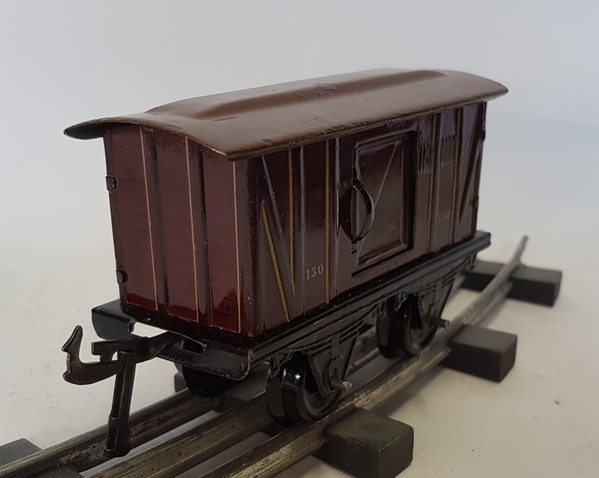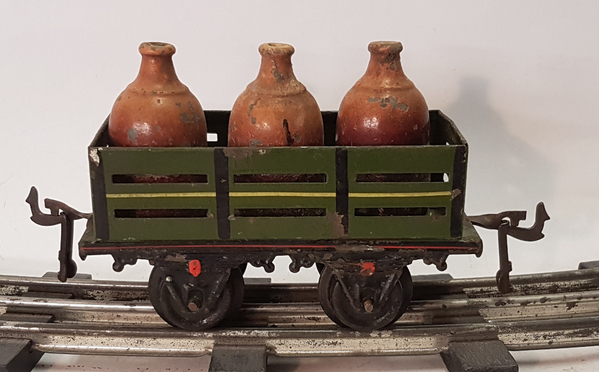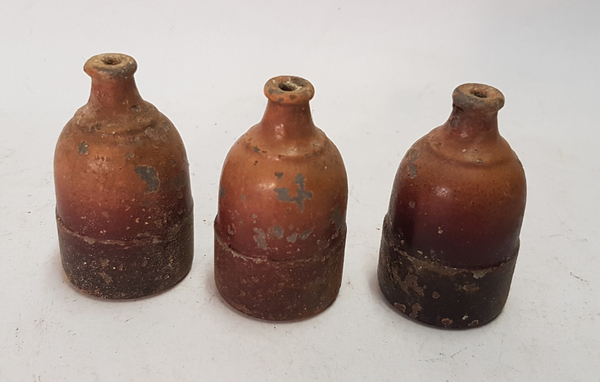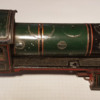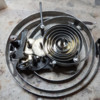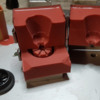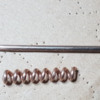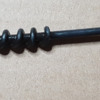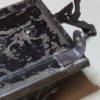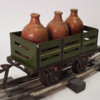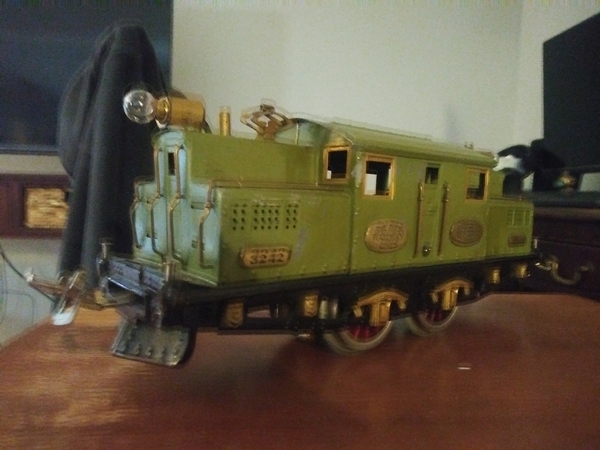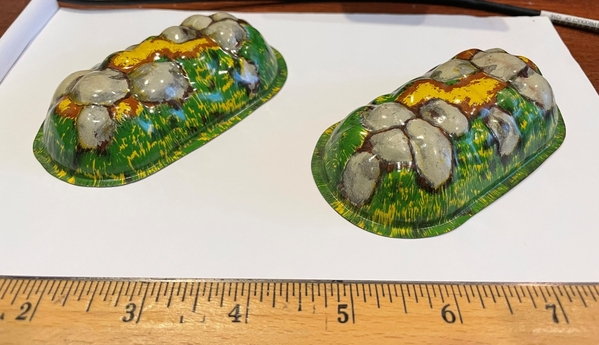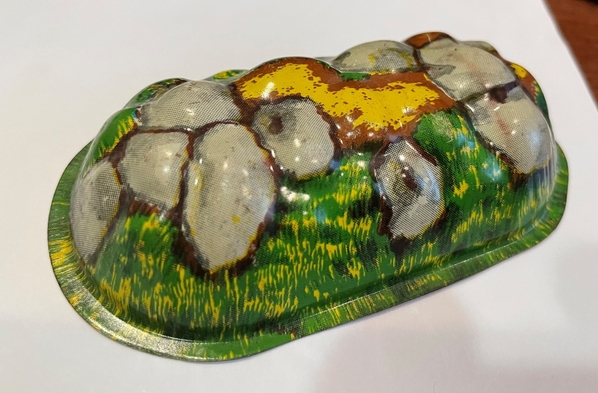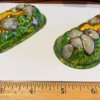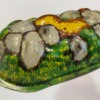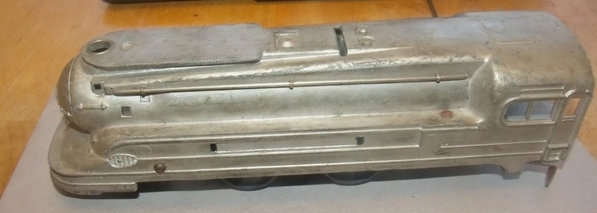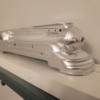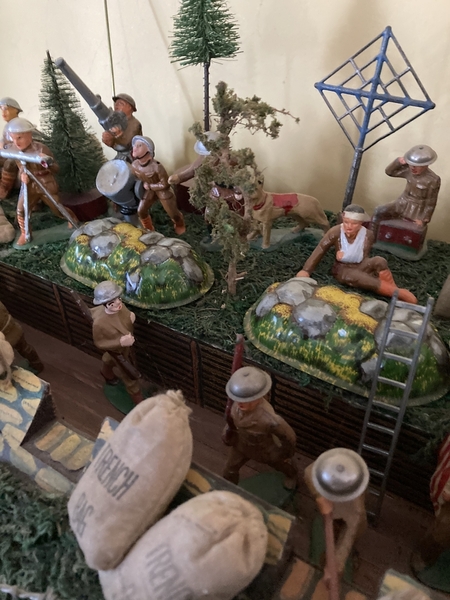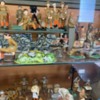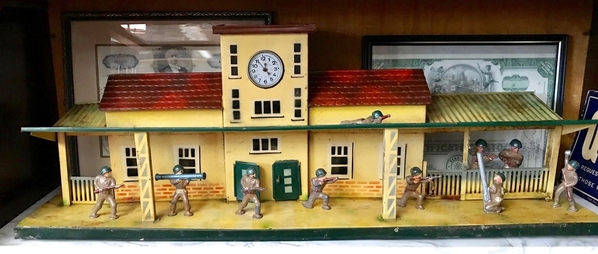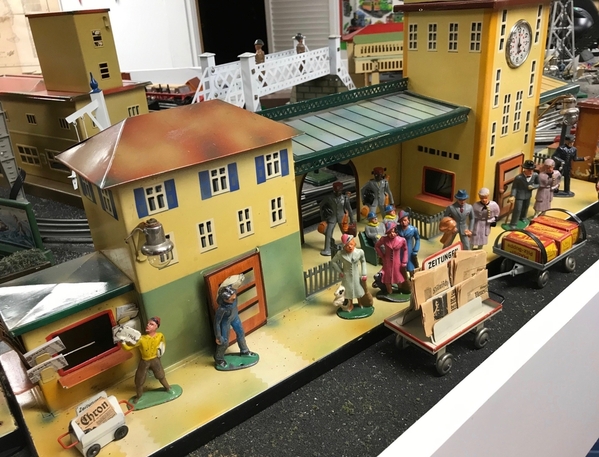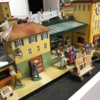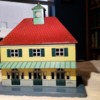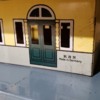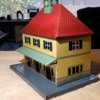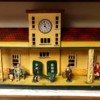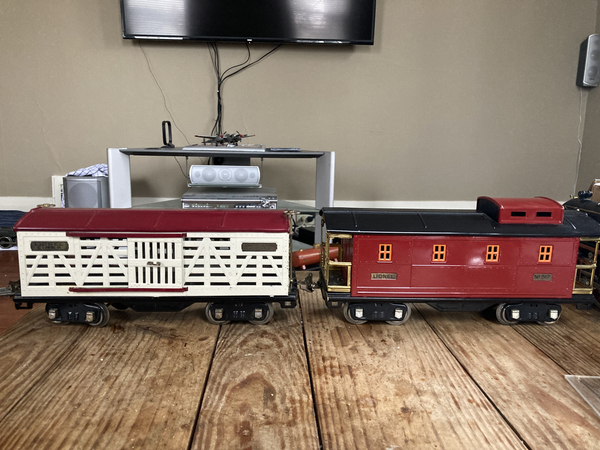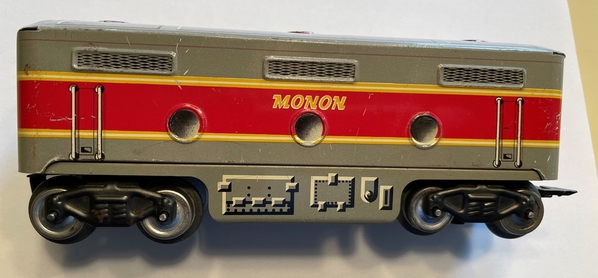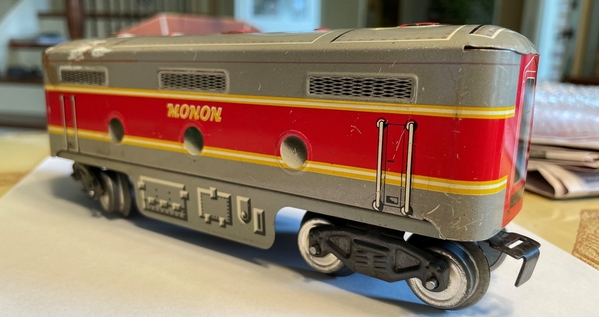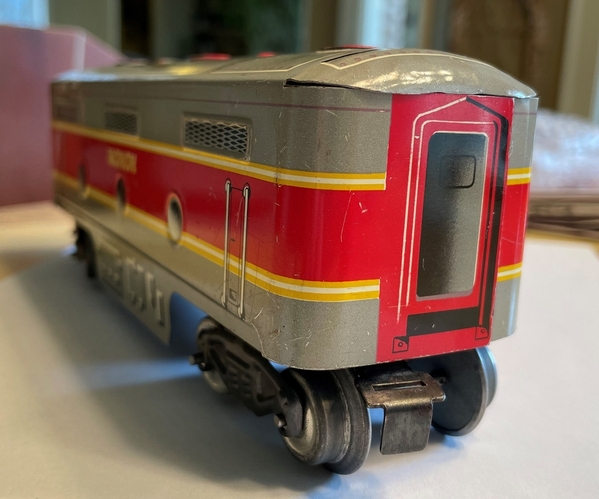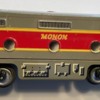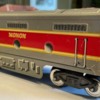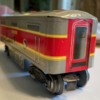@NWL: Doors, Doors, Doors ... wow you have more doors than the singing group (bad joke). Neat display. Thank you for your input on the dating of the 4/8 wheel lithographed cars, it is confusing for sure. In addition, AF printed 8 wheel cars with either the 1115 or 1112 number (I have a red 8 wheel with the 1112 number) so its really confusing. Thanks again.
Today, I have a new acquisition to post. It is an American Flyer " Hummer" locomotive and tender. As best I can tell from my very limited reference material this example is from about 1924 (really dated by the tender ) although it has some aspects (open bottom motor) which might make it slightly earlier. The Hummer line was AF attempt to secure more business in the low end of the toy train market. They catalogued "Hummer" trains from 1916- 1927. Only clockwork , usually cataloged in sets although by 1924 American Flyer did provide a separate price for the loco (no tender) @ 60 cents (reference "American Flyer Prewar O' gauge by Alan R. Schuweiler).
Here is the locomotive and tender , Note the number on the tender is "513" and the loco has added hand rails. Both of these items help in dating this pair to about 1924.
Here is the underside of the clockwork motor. At some point, the bottom was closed via a sheet metal cover, my reference material does not give an exact date for this change.
The "Hummer" tender with crackle like finish and the rectangle containing the number "513". This dates this tender to about 1924 as does the addition of add on hand rails date the loco.
The real of the tender with the name..."The Hummer" and a picture of the AFL winged bird below (hard to discern through the crackle finish )
Well best wishes for a great week...
Don





